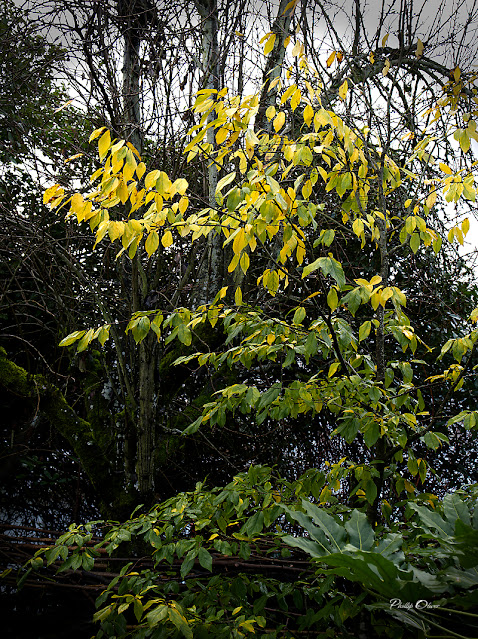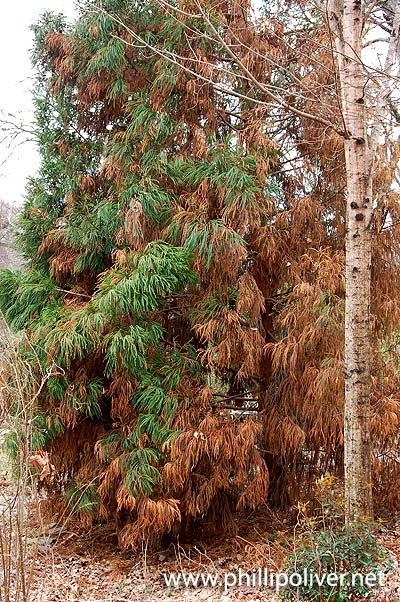This unusual tree sat unnoticed at Yard N' Garden Land for at least two years before I finally rescued it and brought it home. I had admired it for a long time but knew nothing about it and found very few details about it online.
It is xSycoparrotia semidecidua - I have not seen a common name - and it is a cross between the Chinese Fighazel (Sycopsis sinensis) and Persian Ironwood (Parrrotia persica). As the Persian Ironwood is one of my favorite trees in the garden, this looked promising.
During the growing season, the leaves are thick, dark green and glossy, very similar to the Ironwood. For me, the fall color has been bright yellow, but orange is mentioned in descriptions. The fall color arrived very late, well into November, and the yellow color has become brighter with time. The leaves are beautiful now, in early January, and brightens up the wooded border along the back fence. I have yet to see flowers, but they should appear after the leaves finally fall off in late winter (February or March). They are described as "red-brown" and adorn the bare branches.
We like to call this tree "The Norman Bates Tree" as an homage to my favorite film "Psycho" and it is indeed pronounced "Psycho Parrotia".
Text and photos by Phillip Oliver, Dirt Therapy



I've never seen nor heard of this tree before, Phillip. Kudos to you for taking a chance with it. It's beautiful but I wouldn't want to try saying its name 3 times fast.
ReplyDeleteI love a good rescue story. Good for your.
ReplyDeleteThe "Semidecidua" part of the name suggests it may not shed all it's leafs...
I'd be looking forward to seeing a photo of the blooms when they arrive.
Chavli
I've not heard of this before, either. What a great rescue. How nice the colorful leaves stay on so late into winter.
ReplyDelete